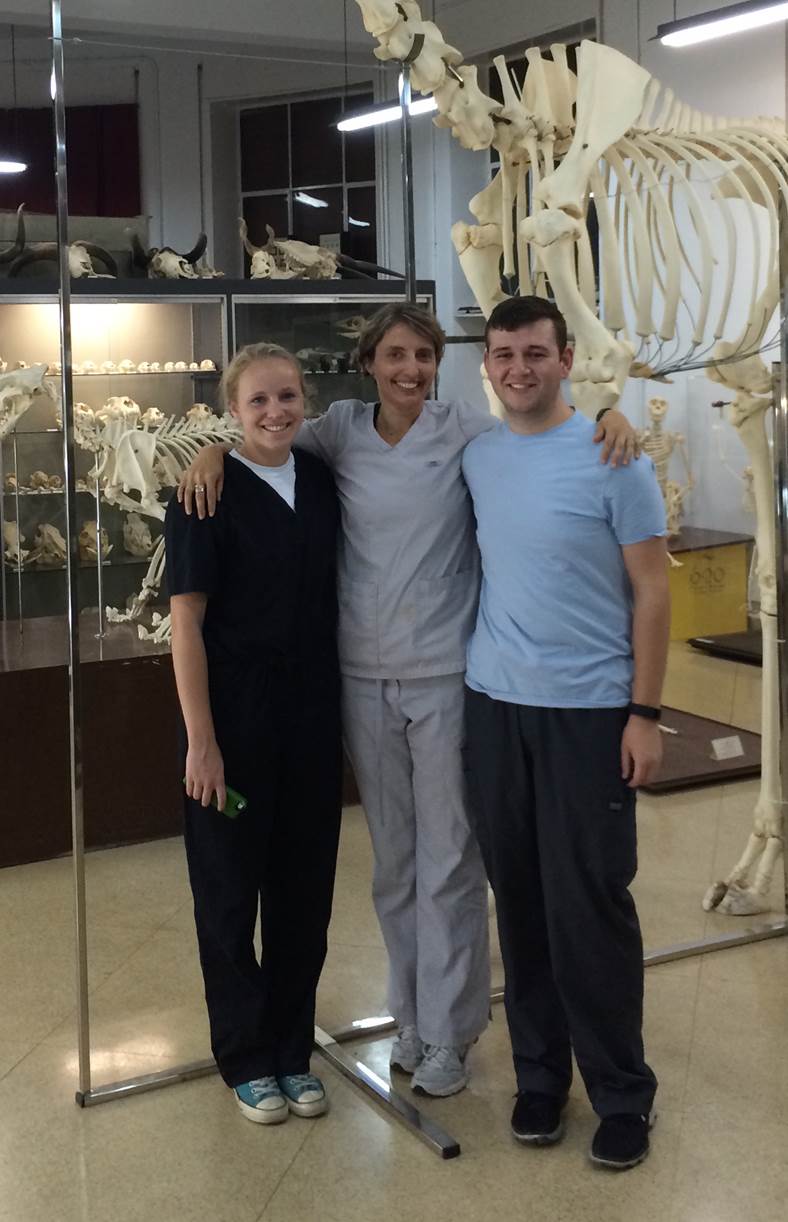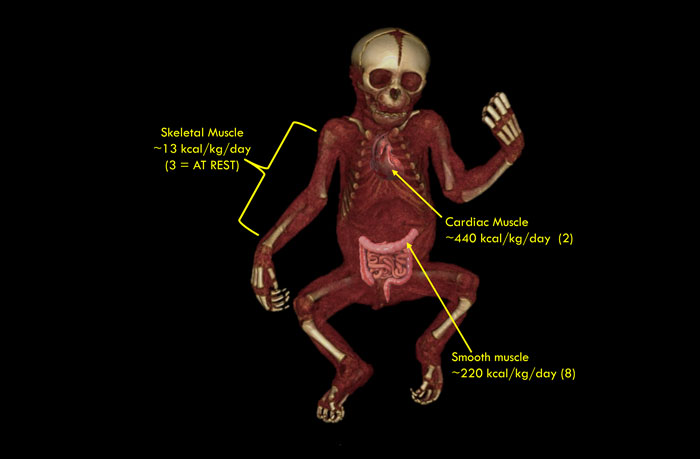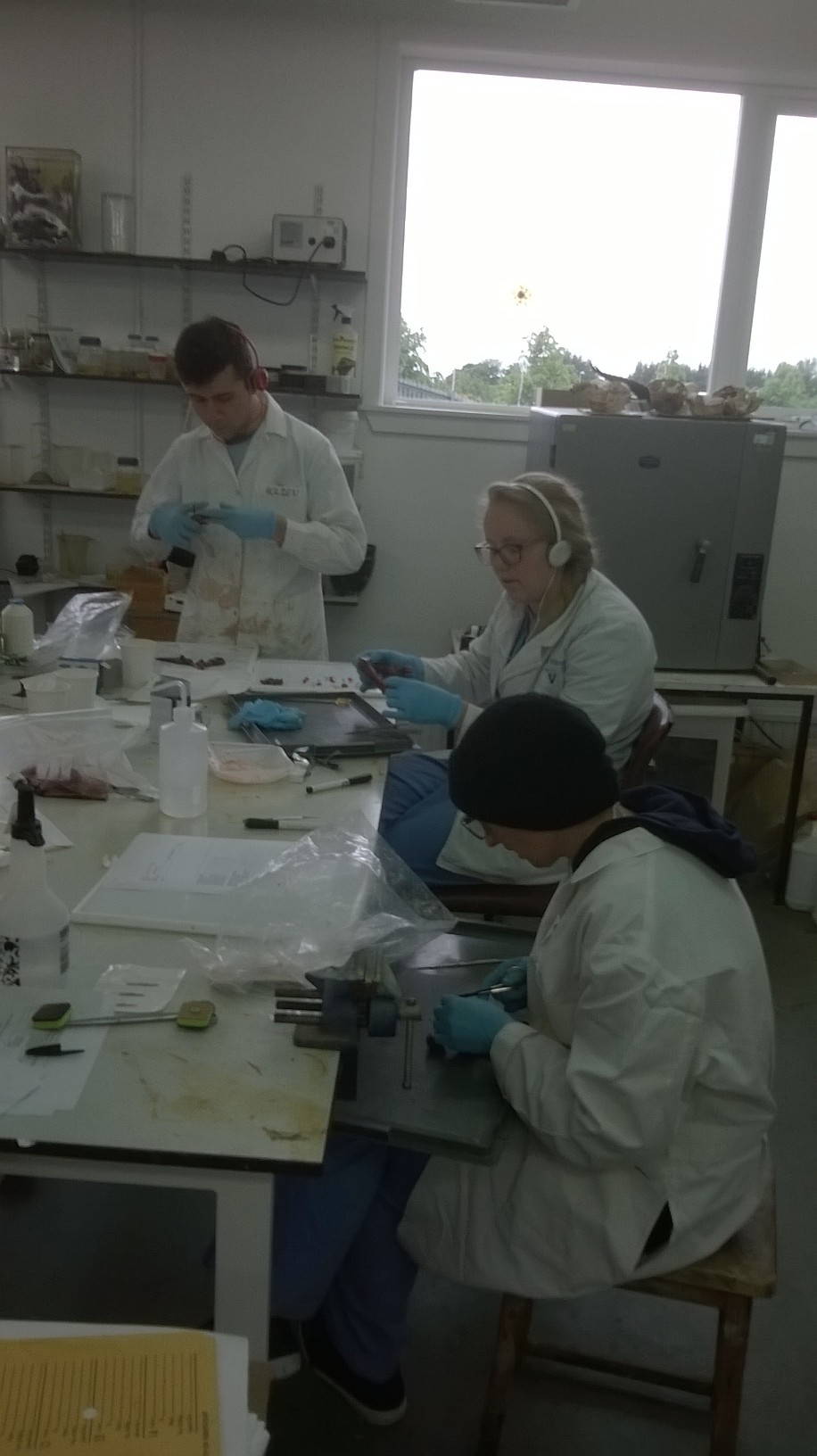Many people hit the gym if they need muscle, but not Dr Magdalena Muchlinski (Magda) and her students, Holden Hemingway and Heidi Vollrath. This research team from the University of Kentucky travelled to Edinburgh for a month-long stay working with researchers and support staff at National Museums Scotland, collecting muscle data on the most extensive and impressive primate collection in the UK and mainland Europe.

Magda is interested in brain evolution. What do monkeys and muscles have to do with brain evolution, you might be thinking? Well, Magda thinks that muscle is the key to understanding how primates (including humans) can afford a large brain.
The growth and maintenance of the brain require substantial investments of energy. One of the most defining characteristics for primates is large brain size relative to body size. Yet, despite having larger brains, human and nonhuman primates do not show an increase in their basal metabolic rate (a measure of energy utilisation by the body) compared to that of other mammals, raising the question of how the high energetic cost of such large brains is met. This trend suggests that there is a trade-off with another energy-demanding tissue in the body when brain size increases; if we are not using more energy overall, then energy that could be invested in another part of our body is instead likely being utilised to fuel our large brains. Magda’s research shows that primates have low muscle mass when compared to other animals, and humans, who have the most notably large brain size, show a 50% reduction in overall muscle mass when compared with other mammals of similar size. This research therefore tests the hypothesis that skeletal muscle is in direct competition with the brain for glucose and oxygen.

If the brain does constrain muscle mass, then:
- larger brains should be associated with decreased skeletal muscle mass;
- the percentage of type I muscle fibres (a type of muscle cell that uses energy in a similar fashion to brain cells) should show a relative decrease in relation to larger brain size; and
- muscle mass development should be suppressed until brain growth is complete, and once complete, there should be an increase in muscle mass development.
National Museums Scotland has one of the most impressive primate collections that Magda has worked with. She has travelled throughout the US and abroad collecting data, but has never seen anything quite as amazing as the collection housed here in Edinburgh. The data collected will be used to test all three hypotheses presented above about how the brain may constrain muscle mass. She cannot wait to “crunch” the numbers and see what she finds.

Magda has been interested in primate anatomy and has been collecting data on primate body composition (muscle, bone, fat) for almost two decades now. You would think that she has seen it all, but in Scotland Magda not only obtained tissues and data from rare primates, but was also able to check something off her “bucket list”. As a dedicated anatomist, the one primate she has wanted to dissect her whole career has been the howler monkey. Howlers are from South American and are the loudest land mammal – their vocalisations can be heard clearly up to five kilometres away. These vocalisations are produced by their unique laryngeal anatomy. Magda found the anatomy fascinating and will forever cherish the opportunity to examine these wonderful animals from outside in.
